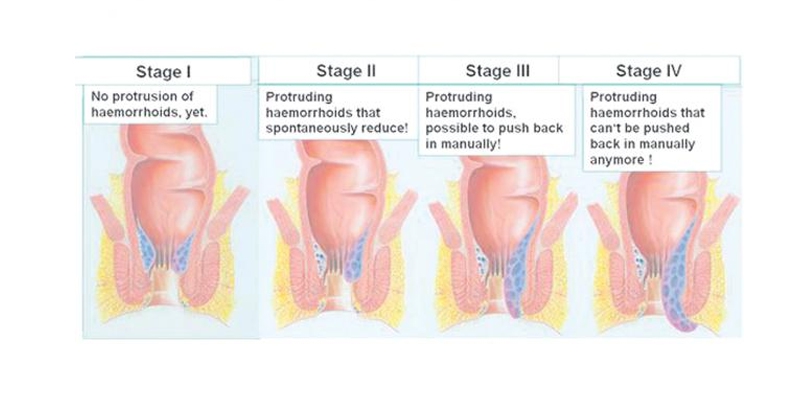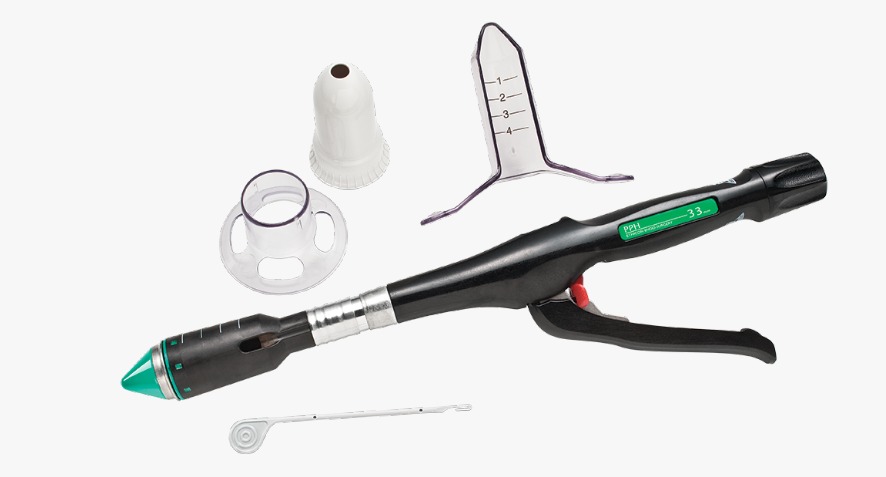PILES
- Home
- PILES
PILES HOSPITAL, TREATMENT, SURGERY, SYMPTOMS & DIAGNOSIS IN SURAT

Piles (or Haemorrhoids) are a very common ailment that may affect men or women at any age. These are caused due to continuous high pressure in the veins. Other causes include constipation, excessive straining during bowel movements and persistent diarrhea. Family inheritance is also seen. Women are more susceptible to piles in pregnancy as the pressure from the growing uterus restricts the blood flow in the pelvis. Lifestyle factors also have a contributory effect.
Classification of Piles :
Piles may be internal or external. Internal piles are further classified into grades:
Causes
These are caused due to continuous high pressure in the veins of the anal region. Reasons may include chronic constipation, excessive straining during passage of stool, low fiber diet, or persistent diarrhea.
Family inheritance is also a factor. Women are more susceptible to piles in pregnancy as the growing uterus imparts pressure on the area and restricts the blood flow in the pelvis.
Lifestyle factors also have a major contributory effect. People are habitually constipated, overweight, lead a sedentary lifestyle with no or minimal physical activity. Habit of reading newspaper or e-news in toilet; eating junk, drinking less water are also the contributors.
Piles Symptoms & Signs :
In most cases, the symptoms and signs of piles have not any complications. Piles generally resolve on their own without showing any signs of seriousness after a few days and you may not even require any piles treatment.
If you are suffering from piles, you may experience the following signs and symptoms.
If piles are not resolved on its own, it can possibly escalate into more serious condition.
This time, you might be prescribed to undergo a piles operation by the doctors.
Diagnosis of Piles :
At Vedanta, the doctors usually diagnose piles by conducting a physical examination. Before writing any prescription for piles treatment, the doctors will examine the anus region of the person suspected with piles.
Also, doctors may ask certain questions regarding your discomfort which includes:
Moreover, for internal piles, a digital rectal examination may be conducted by the doctor or he/she can use a proctoscope. Proctoscope is a device which is basically a hollow tube with a light that allows the doctor to examine the anal canal thoroughly.
If the symptoms of piles are not alarming, the doctor may recommend you a colonoscopy. However, if the symptoms are serious that demonstrates any signs of colorectal cancer; then you might be prescribed to undergo piles operation.
Piles Treatment / Surgery :
In past, open surgery was the only option available. But today, with minimally invasive procedures, doctors approach for patient care has revolutionized. New procedure for haemorrhoids is called 'Minimally Invasive Procedure for Piles' (MIPS), also called 'Stapler Haemorrhoidectomy'. It is less painful and ensures early recovery.
The technique uses a stapling device and takes advantage of the fact that pain-sensing nerve fibres are not present high up in the anal canal. In this procedure, the mucosa above the dentate line (containing part of pile mass) is excised and stapled with the stapler gun, thereby taking care of bleeding and prolapse.
The pile masses are compressed into a cup like cavity inside the stapler. When fired, the titanium staples cut and seal simultaneously, causing minimal bleeding. As the cut line is above the nerves, there is less post-operative pain. Also, there is no incision on the perianal skin or lower part of anal canal and the wound in the anal mucosa is also primarily closed with a stapler, thus, there is no need to do any post-operative dressing.
Nonsurgical Treatment of Piles using CO2 Laser
Haemorrhoids are vascular structures in the anal canal which help in normal stool control. These are physiological cushions made up of arterio-venous channels and connective tissue.
When these haemorrhoids become inflamed, they swell up and may get displaced outwards. This pathological state is called Piles (‘buasir’ in layman terms). These can be internal, external or mixed; and are graded as per appearance from I to IV. Piles are a very common ailment that may affect men or women at any age.
Management
In recent times, patient care has revolutionized with the help of minimally invasive procedures.
Laser Haemorrhoidoplasty (LHP) is the most effective, safe, fast, simple, and feasible treatment available for Piles.
C02 laser is the most influential technological achievement for the treatment of Piles. It has the most effective laser scalpel. It produces a beam of infrared light and seals the lymphatics as it cuts through, and evaporates the unwanted tissue.
Advantages of CO2 Laser
CO2 laser is best suited for soft tissue procedures and is very useful as water (which is the maximum part of biological tissues) absorbs this light frequency at par.
For Piles, management with CO2 laser demands very less surgical time (maximum 30 minutes), no to minimal bleeding, almost negligible risk of infection, and no post-operative pain and oedema. There is no incision made.
We treat all variations of haemorrhoidal diseases at Vedanta Hospital, from internal haemorrhoids with rectal bleeding, thrombosed prolapsed haemorrhoids, and haemorrhoids associated with fissures. For complicated cases, other techniques can be utilized in combination with CO2 laser.
Other problems such as Fissure, Fistula, and Pilonoidal Sinus can also be managed effectively through this laser.

Stapler treatment
Patient Outcome
The treatment procedure is well explained to the patient beforehand. No specific preparations are done. Patient can take a light meal and a cup of coffee in morning, as no special colon cleaning is required. Normal bowel movement is satisfactory. In case of constipation, enema can be given preceding the treatment. In 98% cases, local anaesthesia is used.
Overall patient outcome is excellent and most importantly, the patient can go back home the very same day and join back work in 48 hours!